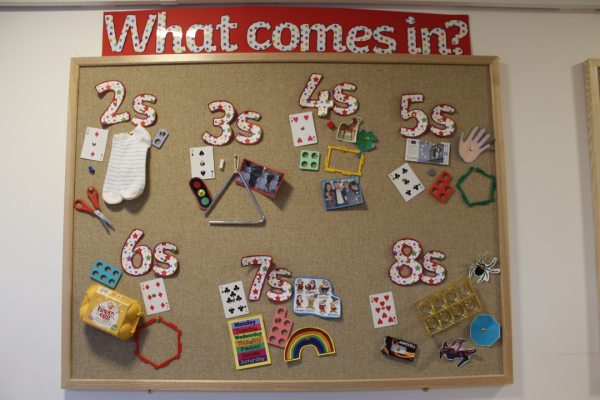Whole-school approach to learning times tables
How groups of primary schools have been introducing a twin-track approach to times-tables learning
04/03/2021

How do you help children learn their times tables? Regular practice? Or lots of lessons that expose the mathematical structure and connections within tables? Or maybe a mix of both?
Over the past few years, more than a hundred schools in London have participated in a research project, run by their local Maths Hub, which has formalised a mix of both approaches.
In each year, from 2017/18 onwards, teachers from groups of schools attended a series of CPD sessions run by Professor Jenny Field from the School of Education at the University of Greenwich. They started to experiment with a whole-school approach to times tables learning designed by Prof Field. Experiences were shared within the group as the year progressed and schools tailored their approaches to fit in with local factors in their own schools. In most schools, the activity was concentrated in Years 2, 3 and 4, but elements were also tried out in other classes. As a result of the activity, almost all schools have adopted new times tables learning practices, consistent across year groups. The project has been organised every year by the London South East Plus Maths Hub and funded, as part of the wider Maths Hubs Programme, by the DfE.
Exploration and practice
The broad shape of the approach used in the project is three-fold.
- In each class, a whole half term is devoted to a new times table.
- Within that half term, three whole lessons are devoted to exploring the patterns and connections within the new times table.
- Three or more times a week in every class there’s a five- to ten-minute ‘retrieval practice’ session, including one or more of the following: games, counting-stick work, step counting using manipulatives, chanting and technology-based, quick-reaction exercises.
Each school was also encouraged to decide on, and follow consistently, key teaching components, such as:
- the order that each class encounters each new times table
- how multiplications are presented in writing. For example does the 6 times table appear as 1 × 6, 2 × 6, 3 × 6... or 6 × 1, 6 × 2, 6 × 3... ?
- linking each new times table, at the outset, to the real world.
More than just recalling
Prof Field has written about the project in two articles for the Mathematical Association (see links at the bottom of this article) in which she also discusses what is meant by, and what we understand by, the terms ‘memorisation’, ‘rote-learning’, ‘recall’, ‘learning by heart’, and ‘automaticity’.
Behind her advocacy of a mixed approach to times tables learning is a belief that children should be able to go further than merely recall multiplication facts.
‘We want children not only to recall that 7 × 4 = 28, but more important know commutative and inverse facts, mini and mega facts, e.g. 70 × 4 = 280 and 0.7 × 4 = 2.8; the distributive law, e.g. (5 × 4) + (2 × 4) = 7 × 4; doubling and halving facts, and also know that 4 × 7 is the same as (5 × 7) – 7’
Case study schools
In Prof Field’s articles, teachers from two of the schools that took part in the project talk about their experiences.
Sunita Vyas, maths lead and class teacher at Foxfield Primary School, Woolwich.
‘We knew that collectively we needed to embed a systematic way of teaching these skills, ensuring sufficient opportunities for practice and recall.
‘Being able to network with other maths leads across the hub was particularly useful, giving leaders the opportunity to discuss progress and challenges we faced… The fact that the programme ran over a year aligned well with our research-based practice within the school.
‘Explicitly taught times tables sessions are now integrated into the school timetable and happen outside maths lessons two or three times a week.
‘The focus on these lessons is developing conceptual fluency through the array hundred squares and other manipulatives, exploring patterns and structures and allowing children to represent and manipulate multiplication facts.’
Allie Day, class teacher at Red Hill Primary School, Chislehurst.
‘We have a consistent framework for weekly times tables across the school as well as a manageable system to assess the children’s progress via online assessments by class or child. Teachers and pupils are able to see the multiplication facts they need to still work on. There is an excitement around times tables in the school now, which gives me hope and encouragement for the future.
‘The start of each new half term is the start of a new times table, and the children look forward to drawing pictorial representations and finding images for their displays. Times tables are also taught as a mental starter on a regular basis, maintaining children’s fluency. Maths lessons on the focus times table are more exploratory and the children are beginning to develop their explanation and reasoning.’
Read Jenny Field’s first article, published by the Mathematical Association in spring 2020, and her second article, published in spring 2021. Both links will download a PDF of the article.
Image in article provided by Redriff Primary City of London Academy, one of the schools that took part in the project
